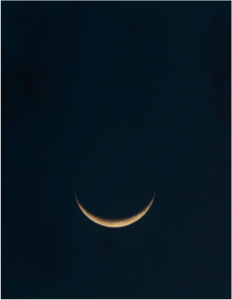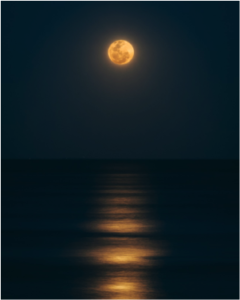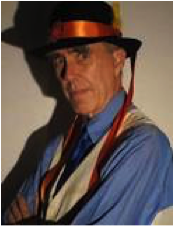In this three-part series, Heather Ruce invites us to work with a cycle of eight Inner Tasks. These exercises were originally designed to be used sequentially over the course of eight weeks in conjunction with daily life. Bringing one of these exercises each week into moments of the day invites us into a deeper visceral relationship with Gurdjieff’s concepts of self-remembering and self-observation as we grow in our experience with the three centers of sensation, feeling and thinking.
Available here as part of Northeast Wisdom’s intention to offer quality resources and support for the Wisdom community, these may be used in whatever way best works for you. Each task is an excellent resource for extended practice in the activities of life over time, whether you are new to Wisdom or an experienced practitioner. We begin with Weeks I and II in this post; Weeks III through VIII will follow shortly. Check out the growing collection of exercises on our Wisdom Resource page.
We welcome your comments and your own experiences of these exercises in the Comments section below.
 Week I
Week I
Welcome to an eight-part series of Inner Tasks. As you may know, our work with inner tasks is rooted in the mindfulness practices of the Gurdjieff tradition that is part of our Wisdom lineage. We are invited to engage these inner tasks individually and as a collective to continue our work with Attention and Presence, accessing and developing a deeper place of Being within rather than working from habitual automaticity.
In this eight-fold cycle we will be working with self-remembering and self-observation. The term self-remembering is a bit confusing because remembering often implies recalling a memory when in fact we cannot remember ourselves in that way. Self-remembering is about finding ourselves in the present, in time and space, in the body but not as the body. We come to recognize ourselves as Awareness rather than as our typical identifications with thought or emotion. As we work with the aim of remembering ourselves, we will begin to observe ourselves from Awareness rather than from the mind. This may seem simple at first and we may even think we are aware, awake, witnessing: but so much of what we mistake for self-observation is really just the mind watching itself.
The task for this week is twofold. First, work with being present by finding yourself in each moment in your body as you go about your day, in each slice of the now. As a way of locating your body, you might try placing your attention in the solar plexus or abdominal area.
Second, as you struggle to be present you can begin to observe yourself in action. In his book Self Observation, Red Hawk, a long-time student of the Work, uses four fundamental principles of self observation. We will work with the first principle of self observation which is without judgment. We often say “without judgment” but I would like us to pause and spend some time with this.
The mind judges everything—people, places, experiences, things—based on association in order to categorize, label, and store information, primarily into likes and dislikes—as is often mentioned in Wisdom Schools. Love/hate, good/bad, etc. Red Hawk says:
It also judges every one of my actions in order to create the illusion of separation between myself and the action: I speak cruel words, then I judge those words as wrong and in so doing, I create the illusion that I am separate from the action being judged. The moment there is blame, there is separation from what is blamed. In this way, I prevent myself from seeing and feeling my behavior and taking full responsibility for it, owning my behavior. Judgment keeps me blind to myself. And I believe in this judgment process totally, either by accepting or rejecting what it tells me. Either way, I am “identified” (= “I am that”) with the process of judgment. It rules; I obey without question.
Again, the first task for this week is to work with being present by locating yourself in your body, placing your attention in the solar plexus or abdominal area as you go about your day, in each slice of the now.
As you struggle to be present you can begin the second task, observing without judgment. You can do this by holding the attention in bodily sensation, in the movement of energy in the body, noticing places of ease and allowing them to take up more space. The intellectual and emotional center may have movement—stories and emotions that are not called for in the present situation. Let that movement of thought and/or emotion remind you to keep your attention in your body; then see what happens to the energy of thoughts or emotions when you do not allow them to capture your attention.
What sensations are present in your solar plexus or abdominal area? What do you notice in your mind without the story? What feeling is present without the emotional charge?
 Week II
Week II
Last week we worked with being present in our bodies by placing our attention in the solar plexus or abdominal area as we went about our day and observing ourselves without judgment when we noticed we were no longer present in this way.
I noticed how often my inner judge was at work and how often it compelled me to want to change what I judged. It is the brain’s tendency to look for ‘what’s wrong’ and try to ‘fix it.’ My attention is not free and stable—it flits all around to the past and the future and is often working toward trying to ‘fix’ something in me or around me. I can notice the felt-sense of the energy I lose as a result of this.
This week we will continue to work throughout the day “to remember ourselves” by being present in our bodies, in the sensations in our middle and lower torso, and add in the second fundamental principle of self observation according to Red Hawk: self observation without changing what is observed. The urge to change what one sees is another trick of the judge. This reinforces identification and brings us back to the categorical mind placing what is observed into the like/dislike or good/bad file, co-opting our attention so that it is no longer free. We become identified with what is observed: “I’ve lost presence which is bad” becomes “I am bad/no good/wrong and need to change.”
What we put our attention on grows so when our attention is caught in judgment and we try to change what we observe, then the judgment habit is what is fed and grows. Red Hawk says: “When the attention remains stable and steady, fixed upon bodily sensation and keeping the body relaxed then the urge has nowhere to go except to feed the stable and steady attention.” He mentions that the energy must go somewhere and if it is not consumed by thoughts and emotions unnecessary in the current moment that turn into some sort of story or drama, then the energy can be available as food for free and stable attention.
Red Hawk says our story is as follows:
Struggle to change myself, based on the judgment ‘I’m no good/bad/wrong’ = a lifetime of drama to change what I am. The alternative is to observe without ‘identification’ with the judgmental process, accepting whatsoever I see, allowing it to be in the body, and not doing anything about it at all—simply observing, relaxing, accepting, allowing—neither for nor against.
Our task this week is to “remember ourselves” and when we find that we are no longer, to continue to observe without judgment and without changing what is observed. We will allow the energy in the body from thought and emotion to become food for our attention rather than judgment. What happens when you allow that energy to be in the body without doing anything at all? What happens in your intellectual and emotional centers?
After working in this way, it may be helpful to write down some of the patterns of identification that you begin to see. You will notice identification by hearing yourself say “I am someone who … [for example: follows through on commitments]” or “I am a … [for example: nice person].” Notice not so that you can change the identifications but simply to be aware of them so that you can continue to spot them.
I invite you to share any observations you have below as you work with these tasks.
posted by Heather Ruce, May 6, 2020
When Heather first encountered the Gurdjieff Work at a Wisdom School in 2012, something profoundly resonated in her. This part of the Wisdom lineage wove together the threads of her studies in psychology, somatic experiencing, and spirituality—grounding and enlarging them in a deep tradition and set of maps. The Gurdjieff Work and Movements have become an integral part of her life and she continues to commit to them in her ongoing practice of morning exercises, self-observation, and self-remembering, to name a few.
 Heather contributes to the Wisdom community in many ways, most recently offering a contemplative retreat near her home in southern California entitled “An Introduction to A Wisdom Way of Knowing: What the Christian Path Has to Offer”; working as a TA for the CAC’s Introductory Wisdom School 14 week courses; offering Wisdom practice circles, lectio divina groups, ongoing Collective Pause Meditation & Practice; and currently holding the post for the ongoing the Friday morning Wisdom Meditation through Northeast Wisdom.
Heather contributes to the Wisdom community in many ways, most recently offering a contemplative retreat near her home in southern California entitled “An Introduction to A Wisdom Way of Knowing: What the Christian Path Has to Offer”; working as a TA for the CAC’s Introductory Wisdom School 14 week courses; offering Wisdom practice circles, lectio divina groups, ongoing Collective Pause Meditation & Practice; and currently holding the post for the ongoing the Friday morning Wisdom Meditation through Northeast Wisdom.
Heather assisted her mentor Deborah Rose Longo with the Gurdjieff movements at the Claymont Center in West Virginia in October and December 2019 during Cynthia Bourgeault’s “Mr. Gurdjieff Meet Mr. Teilhard” retreats, and has contributed to several posts on Northeast Wisdom. You may find links to those posts, her website and read more about Heather on her Wisdom Profile page.
 Red Hawk is an author, professor, poet and 30-year student of the Work under the guidance of the Gurdjieff Society in Arkansas. His books, Self Observation: The Awakening of Conscience, An Owner’ Manual and Self Remembering: The Path to Non-Judgmental Love, An Owner’s Manual, along with other books and poetry, are available at Hohm Press.
Red Hawk is an author, professor, poet and 30-year student of the Work under the guidance of the Gurdjieff Society in Arkansas. His books, Self Observation: The Awakening of Conscience, An Owner’ Manual and Self Remembering: The Path to Non-Judgmental Love, An Owner’s Manual, along with other books and poetry, are available at Hohm Press.
Image credits from the top: Moon Cycle, thanks to @SanniSahil for making this photo available freely on @unsplash; Falling Waters Moon, thanks to @_stphnwlkr for making this photo available freely on @unsplash; Full Moon, thanks to @guzmanbarquin for making this photo available freely on @unsplash; photo courtesy of Heather Ruce; photo courtesy of Red Hawk’s page at Hohm Press above.
Eight Inner Tasks:
Self-Remembering, Self-Observation, and Observing the Centers
In this three-part series, Heather Ruce invites us to work with a cycle of eight Inner Tasks. These exercises were originally designed to be used sequentially over the course of eight weeks in conjunction with daily life.


